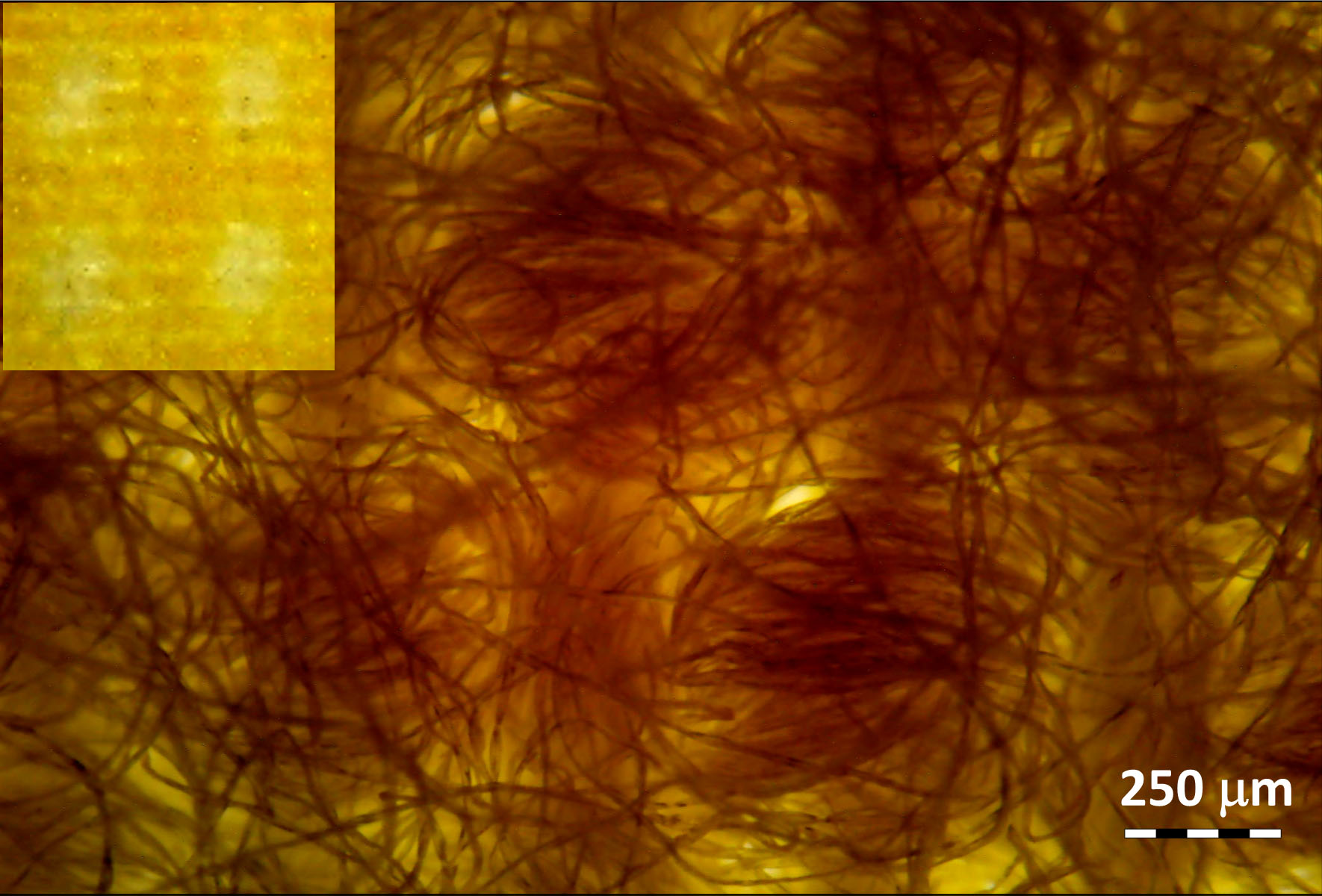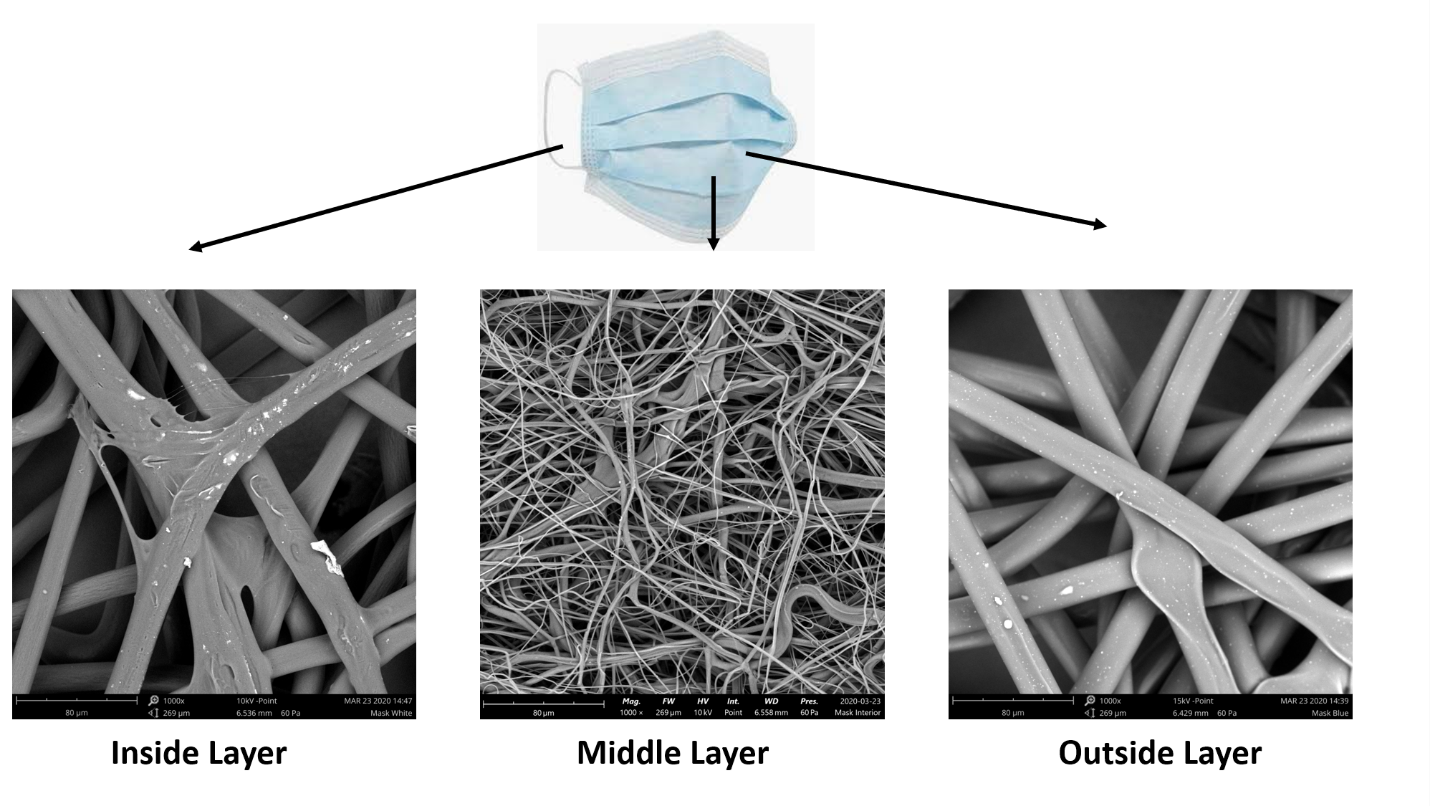Part 1 of many.
by Steve Nelson (Biology/Chemistry/Physics/Math teacher at Roadstead Montessori High School, Norfolk VA)
Viruses are very small. The Coronavirus is about 100 nanometers wide. It’s hard to comprehend this size. The smallest unit on the standard ruler used in school is 1 millimeter.
If we zoomed in and could divide that 1 millimeter into 10,000 smaller marks, that’s 100 nanometers, the size of a coronavirus. They are very small! You could put 800 of them side by side and they would be the thickness of a human hair… This is still hard for me to comprehend. Maybe adding another “very” AND capitalizing it AND bolding it will help? Let’s try again…
Viruses are very VERY small!
Masks help, but aren’t perfect. Here’s a cotton mask under a powerful microscope:

See the 250 um in the bottom corner? There are 5 notches, one of the notches is 50um, that’s about the size of the holes between those fibers. Compared to a virus cell that hole is HUGE! Think in terms of nanometers.
One of those white notches is 50,000 nanometers. Remember a coronavirus is 100 nanometers. Let’s put this in perspective. I am 1.7 meters tall. A hole that is 500x larger than me is about 1 kilometer wide! This is a BIG hole.
Viruses are VERY VERY small!
This doesn’t mean cotton masks are ineffective. On the contrary, cotton masks can be very effective, but they require many layers to work well at stopping transmission.
The downside is that these extra layers quickly add thermal insulation and make your face hot. If you can handle the heat and as long as cotton masks are routinely washed, they are an effective way to reduce transmission from one person to another.
That’s the second downside to using cotton masks at Roadstead High School. Teenagers are not known for being the cleanest age group of the homo sapiens species. One of our concerns at Roadstead was how would we know if the students washed their mask? This brings us to the next type of a mask.
A surgical mask is made of polyester fibers. Here is an image from a Phenom scanning electron microscope.

A scanning electron microscope is very powerful. Once we are safe from Covid, I will arrange a trip for our Biology and Chemistry students to visit William & Mary and use their Phenom Pro scanning electron microscope. This will be a wonderful opportunity for our students, something that is not available at almost any other high school.
As you can see in this picture, the fibers are much closer together. But still quite large. The fibers themselves average 17,000 nanometers [2]. It appears many of those holes are 1000s of nm, but with multiple layers, a surgical mask have pores that are 300 nanometers. Remember a virus is 100 nanometers. Still 3 times smaller than the holes.
So how does a mask stop a virus that is smaller than the pores in the mask?
It has to do with water droplets.
Have you ever been sneezed on? It’s nasty! A spray of water droplets all over you! It’s so gross that just about everyone feels embarrassed when they sneeze on someone else. But those water droplets are how virus cells are transferred. The good news is that water droplets are HUGE!
“Respiratory droplets are usually divided into two size bins, large droplets (>5000 nm in diameter) that fall rapidly to the ground and are thus transmitted only over short distances, and small droplets (≤5000 nm in diameter). Small droplets can evaporate into ‘droplet nuclei’, remain suspended in air for significant periods of time and could be inhaled.” [5]
Both large and small water droplets can be stopped by a mask. But masks aren’t perfect. They have openings on the side and around the nose. When small droplets get through the edges of our masks they can become airborne.
That means they can float in the air. When viruses are floating in the air it is possible to infect someone else without sneezing, coughing or directly breathing on them. The infected person may have even left.
I’m not purposely trying to scare you, but this is scary. It scares me.
At the end of the day our goal is to keep not only our students safe, but also our teachers (LIKE ME!!!) safe from Coronavirus.
How are we dealing with this?
With science and engineering of course.
At Roadstead High School, during the pandemic we ALL wear masks. We opted to standardize on surgical masks that we throw away at the end of each day. This way we do not have to worry about whether people are keeping their masks clean each day.
Masks aren’t perfect, they are only one step in the “Swiss Cheese Respiratory Virus Pandemic Defense”

Because masks aren’t perfect, secondly we are working outside. Viral cells that are subjected to UV from sunlight. This almost instantly kills them.
Next up… Let’s talk ultraviolet radiation!
[1] https://www.nist.gov/news-events/news/2020/06/face-coverings-made-layered-cotton-fabric-likely-slow-spread-covid-19
[2] https://www.nanoscience.com/applications/materials-science/effectiveness-of-masks-fast-answers-with-automated-sem-analysis/
[3] https://www.ncbi.nlm.nih.gov/pmc/articles/PMC2234804/?page=5
[4] https://www.who.int/news-room/commentaries/detail/transmission-of-sars-cov-2-implications-for-infection-prevention-precautions
[5] https://www.ncbi.nlm.nih.gov/pmc/articles/PMC7224694/